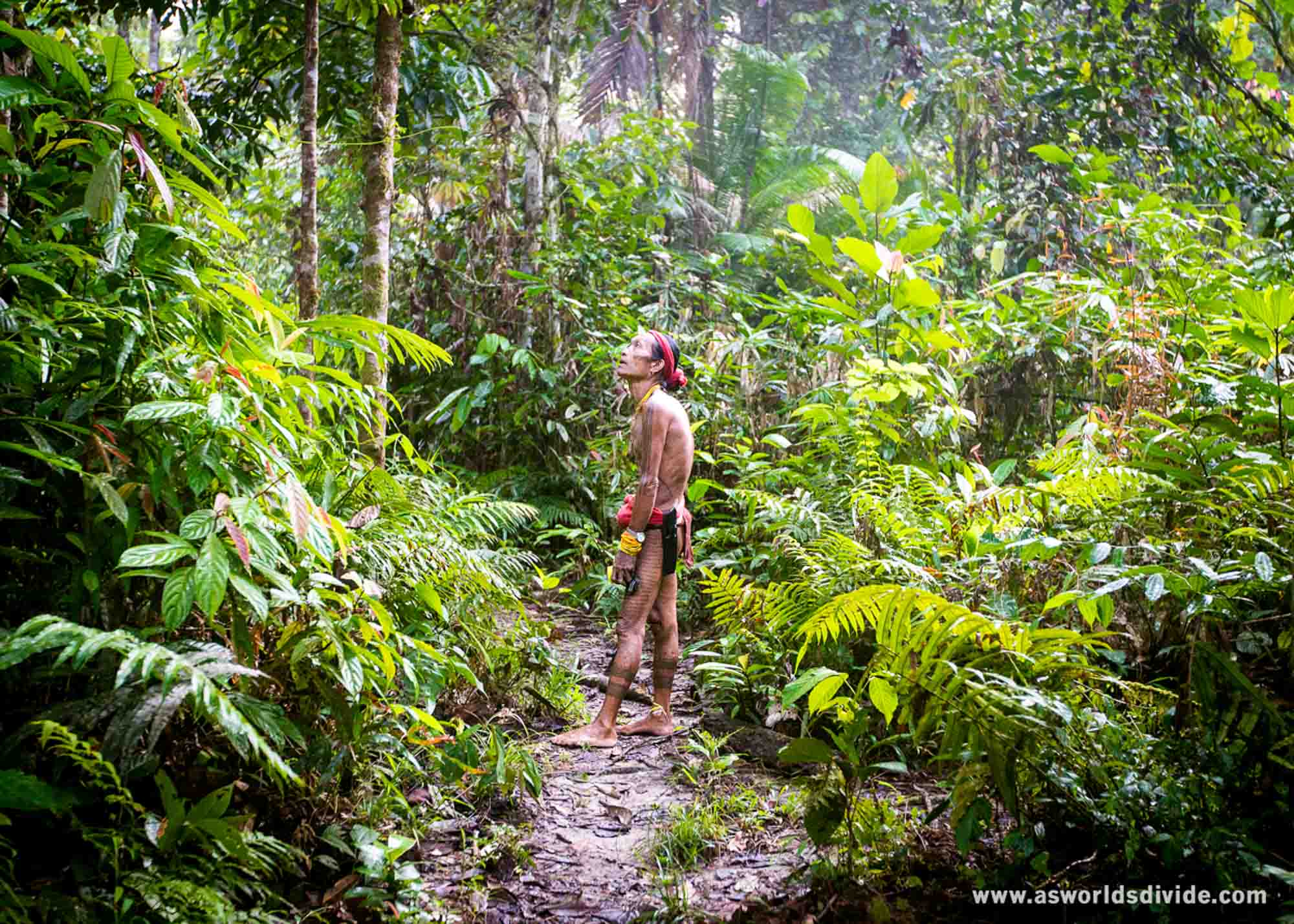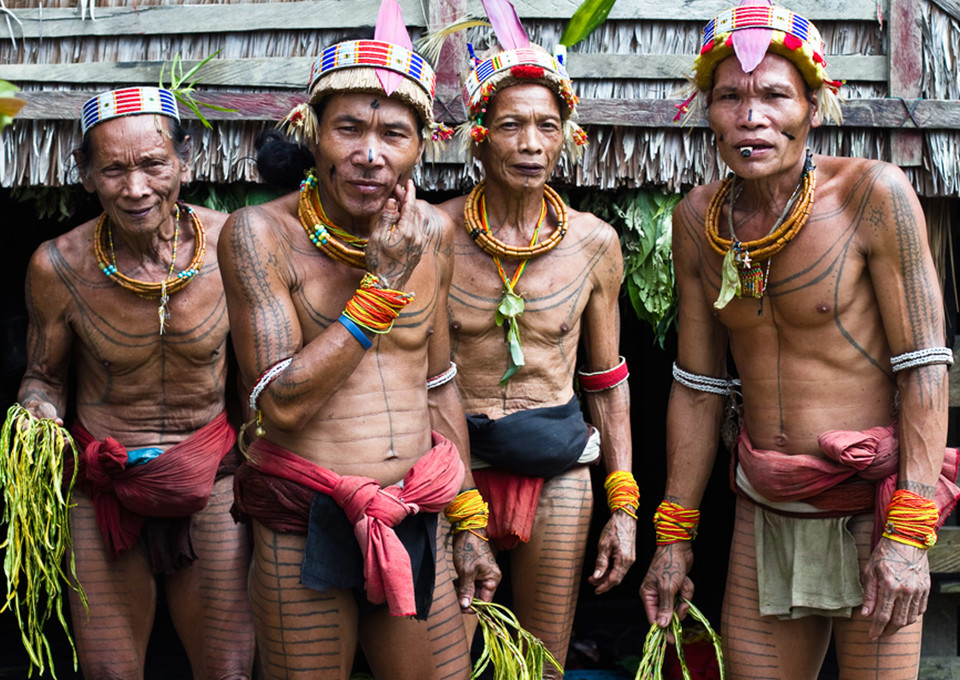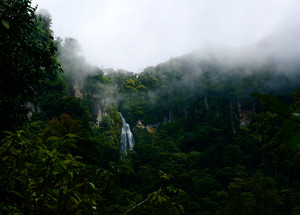In 2009, deep in the forest of Siberut Island, in Mentawai, Indonesia, an elder shaman named Aman Tabilik Kunen said something to me that I’ve never been able to forget.
“If we do not share,” he told me, “we will die”.
I’d left home in Melbourne for Mentawai about six months prior, moving to a small coconut-farming village on a tiny outer island. I had been drawn to Mentawai by the hope of discovering another way of life – a rich and sustainable Islander culture. Instead, I found an Indigenous people in a desperate struggle for health, employment and subsistence.
It was in this coconut-farming village that I met Justinace, a kind and gentle middle-aged Mentawai man. Justinace’s home was in a nearby government settlement, but because of the difficulties he faced in finding enough income to support his wife and three children, he rarely spent any time there.
Instead, Justinace spent his days and nights diving along the ocean floors looking for sea cucumber or lobster, which were sold to mainland Sumatra by a foreign businessman. It pained me, seeing Justinace risk his life breathing oxygen via a ratty old compressor in a job that barely paid him enough to live – let alone enough to support an entire household. He would often go weeks, sometimes months, without seeing his family.
I grew close to Justinace and worried about him. I asked him whether there were other alternatives – whether it was still possible to live a subsistence lifestyle from the land, in much the same way as his ancestors had. I asked because I’d recently begun learning Mentawai’s agricultural practices, and it seemed to me there were enough resources available to live the old ways.
“It was different in the old days,” Justinace told me. “If you were hungry and saw food in someone’s garden you could help yourself – it wouldn’t matter if you took some because there was enough for everybody.”
“But now”, he said, “with the establishment of a marketplace in the nearby port town, people are no longer happy if you take a piece of their food. Because now it is money.”
Hearing Justinace’s story was confronting; it was such a clear demonstration of how systems that these peoples had never had a need for – money and capitalism – were having such a fundamentally destructive impact on their lives.
Soon after, I moved to the island of Siberut, where, deep in the forest, I came face-to-face with Mentawai tribespeople still practicing their Indigenous way of life.
It is an incredible fortune to have an abundance of natural foods and resources all within arm’s reach, but such a fortune remains available only to those who possess the knowledge of how to utilise and manage it sustainably. For the Mentawai, their Arat Sabulungan cultural lifestyle is that knowledge; it integrates faith, values, skill, respect and a shared understanding that provides their people with not just a means to exist, but also a source of great prosperity. Without it, the community’s hope, purpose and self-worth dissolve – the Mentawai spirit torn from their soul.
Living with the Mentawai tribespeople for many years, most often with the Saguruk clan, I came to recognise what this spirit looked like. To me, it was the difference between pride and shame, between wealth and poverty. The clan members I met living in the resettlement villages had become disconnected from the culture. They would tell me that “life was a struggle”, that “there were no jobs, no money, no support”. “I hope my children don’t grow up to have the same life as we do,” they would say. “We are poor”.
The situation for the Saguruk who remained in the tribal community, maintaining their connection to the land and their culture, was very different. “We have an abundance of foods, clean water and natural medicine,” they would tell me. “We are rich living here.” Their dream, they’d say, is that “their children would live this Mentawai culture and way of life too.” “Because, living like this”, they said, “we know our children will always be safe”.
In the 1950s, the Indonesian government - led by President Sukarno - introduced the first of its assimilation programs, which were designed to bring “isolated communities” back into the “cultural and social mainstreams”. The intention was to improve the general health, wellbeing, and livelihood of the people. Instead, for the Mentawai, these programs had the opposite effect, inhibiting their ability to sustain their health, community and way of life. Alarmingly, 99% of Mentawai’s Indigenous population are today living as part of these government settlements, struggling to find their feet in a system dividing them from each other, their land, their culture, and themselves.
Two years into my time in the Islands, I met two young Mentawai men named Esmat Wandra Sakulok and August Sikatsila. Both had left their homeland to study at university, Esmat in Jakarta and August in Padang. Growing up, Esmat and August told me, they’d come to believe their native culture was of no importance to their future development; a notion reinforced by the fact that their village education system provided no opportunity to learn about it. I was fascinated by these two young men because, unlike the other Mentawai students I’d met, they were openly and actively showing pride in their cultural heritage.
Esmat and August, motivated to learn about and reconnect with their Arat Sabulungan culture, had formed community groups and initiated cultural activities to help inspire other young Mentawai who were studying on the mainland. These activities encouraged the students to not be ashamed of having a unique cultural identity, of being from Mentawai; this, they said, had an immediate and profound impact on their confidence, sense of community and belonging.
Over the next four years, Esmat and August conducted community surveys and baseline research throughout the Islands, documenting the wants, needs and attitudes of the people. In response to their findings, they began developing a community-driven Cultural and Environmental Education Program (CEEP) called Suku Mentawai.
“We bring in those [elders and leaders] from each district who possess this cultural knowledge,” Esmat explained. “We discuss with them the best methods for teaching and learning and together we develop a suitable model. We provide them the support and they teach our people – either in school or in the province. Together we’ve developed a strategy to protect the future of Mentawai culture and habitat. This is vital for us in maintaining good health, wellbeing and a sustainable existence.”
Indigenous communities worldwide continue to face hardship because the development systems introduced around them have little or no regard for their Indigenous rights, cultural identity, language, religion or their relationship to the land and its resources. Suku Mentawai’s CEEP, which the current Mentawai government have agreed to support, is a huge step in the right direction for the Mentawai people, and provides a clear model for how we can not only protect Indigenous culture, but learn from it as well.
Indigenous peoples have survived tens of thousands of years across a vastly diverse range of ecosystems and through severe changes in climate; they are the true founders of sustainable development. Given that sustainability is now arguably the greatest challenge of our time, there is a lot to be gained by supporting these communities in the development of their own educational solutions, and learning from what they have to say. Their wisdom is just as relevant today as it was a thousand years ago – perhaps even more so. The shaman Aman Tabilik Kunen’s words to me that day in the forest hold true, not just for Indigenous communities themselves, but for us as a global community. Truly, if we don’t learn to share, we will die.
Gallery





